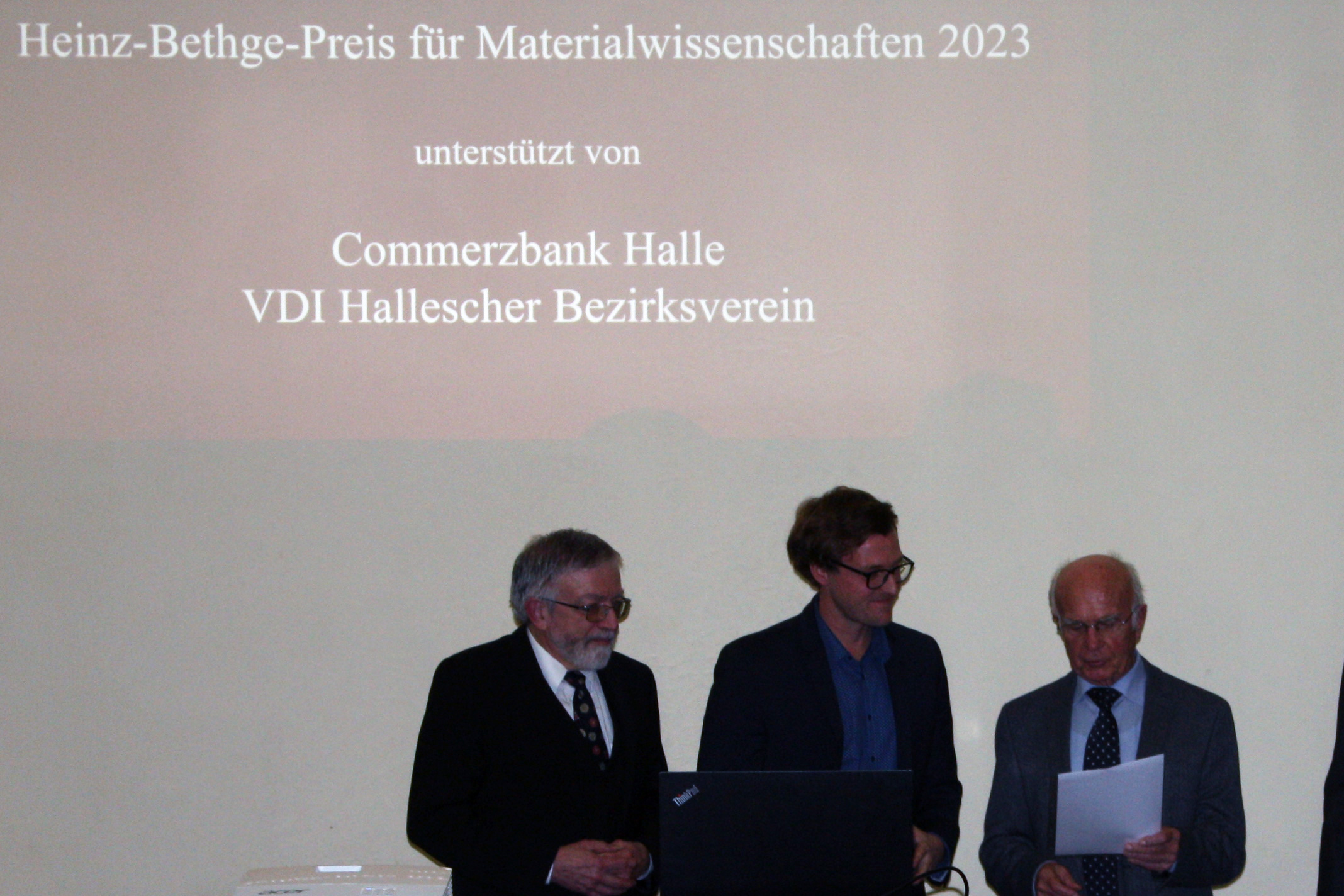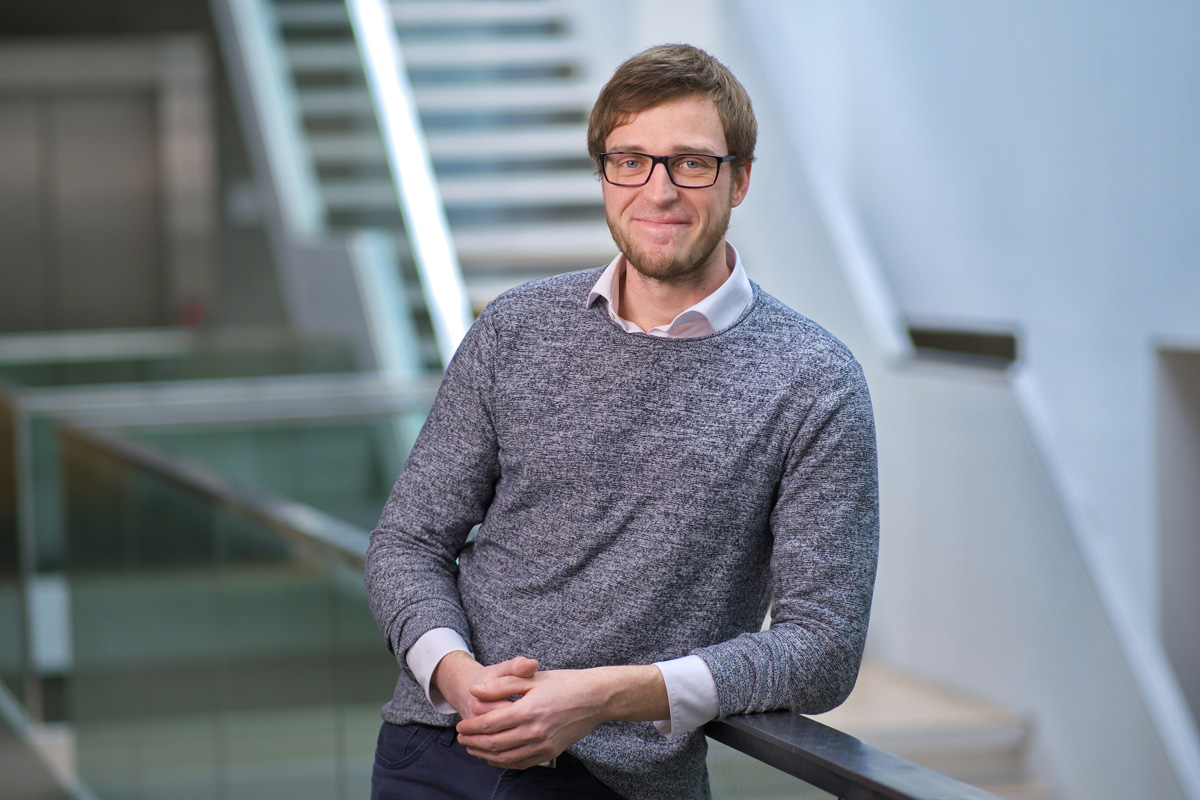Stefan Lange from the Fraunhofer Centre for Silicon Photovoltaics CSP in Halle (Saale) has been awarded the Heinz Bethge Prize for Materials Science, worth 500 euros, by the Heinz Bethge Foundation for Applied Electron Microscopy for his dissertation entitled "Parasitic oxides at buried interfaces in modern silicon solar cells". His findings can contribute to a better understanding of the fundamental properties of the layer systems in a solar cell and the associated electronic properties.


"Stefan Lange's dissertation was not only convincing due to its application-orientated question and the originality of the approach to structure characterization, but also due to the selection of the method used for microstructure analysis using transmission electron microscopy (TEM), a high-resolution electron microscopy method. He used this to examine the layers within a solar cell with nanometre precision. The use of this method underlines the continuing relevance of Heinz Bethge's ideas and the current potential of electron microscopy," said Prof. Dr Goerg Michler, Chairman of the Foundation's Board of Directors, at the award ceremony.
The foundation is named after the founder of the former Institute for Solid State Physics and Electron Microscopy at the Academy of Sciences in Halle (Saale). In this role, Heinz Bethge became one of the pioneers of electron microscopy in Germany, particularly in the application of this method to materials science. With the Heinz Bethge Prize for Materials Science, the Heinz Bethge Foundation has been supporting young researchers in the field of applied electron microscopy since 2011. The prize is awarded annually for outstanding doctoral theses.
Stefan Lange has been working at the Fraunhofer CSP since 2019, where he has been acting head of the "Solar Cell Diagnostics" team since September of this year. His research focuses on material and interface analyses at the atomic level. He completed his dissertation, for which he has now been awarded the Heinz Bethge Prize for Materials Science, at Martin Luther University Halle-Wittenberg. In it, he characterised the layers within perovskite/silicon tandem solar cells at an atomic level. Perovskite solar cells are based on metal-organic hybrid materials in the perovskite crystal structure, which enables high efficiencies in the conversion of sunlight into electrical energy. Tandem solar cells consist of several layers of different materials with different band gaps that can absorb different wavelengths of sunlight. As a result, a larger proportion of the sunlight is converted into electrical energy. The cells investigated by Lange combine these two approaches.
"Due to their higher efficiency potential, perovskite/silicon tandem solar cells promise a significant reduction in the levellised cost of electricity at almost the same material costs and can therefore make a substantial contribution to the energy transition - as soon as the technology is ready for the market. However, some questions about the interactions between the individual layers are still unresearched," says Lange. He therefore focussed, among other things, on tunnel diodes, which can serve as connecting elements between the individual layers stacked on top of each other in tandem solar cells. These diodes enable the efficient transport of charges between the layers and help to reduce the internal resistance of the cell and improve charge transport.
In the case studied by Lange, a polycrystalline silicon tunnelling diode connects an upper layer of nickel oxide (NiOx) in the perovskite top cell with a TOPCon bottom cell underneath. "This idea had not previously been tested in perovskite/TOPCon tandem solar cells. Our experiments have shown that the contact resistance is originally too high for the tandem application. However, we were able to reduce it considerably by introducing a nickel interlayer just 2 nm thick at the interface," says Lange.
The award ceremony took place on 14 November at the annual meeting (Stifterforum) of the Heinz Bethge Foundation in Halle (Saale).
"I am delighted to receive this special honour. The great relevance of electron microscopy, which Heinz Bethge established in Halle, is still evident today. This method is indispensable for my day-to-day research and for materials analysis as a whole," says Lange.
 Fraunhofer Center for Silicon Photovoltaics CSP
Fraunhofer Center for Silicon Photovoltaics CSP